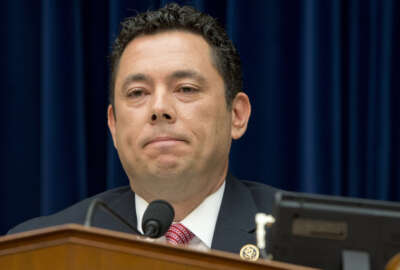Lawmakers ask for GAO’s help to identify ‘burrowing’ over last 4 years
A bicameral group of Democrats have asked the Government Accountability Office to help them track instances of burrowing that have occurred during the last four...
A bicameral group of lawmakers are asking the Government Accountability Office to help them identify instances of “burrowing in” over the last four years.
The concept of “burrowing” refers to the practice of converting political appointees to positions in the career civil service.
The Office of Personnel Management can and does play a role in approving these conversions. But members of Congress often pay close attention to “burrowing in” near the end of the presidential administrations.
This latest request came from Gary Peters (D-Mich.), ranking member of the Senate Homeland Security and Governmental Affairs Committee, as well Sens. Tom Carper (D-Del.), Ben Cardin and Chris Van Hollen (D-Md.).
“Our non-partisan civil service is the backbone of the United States government,” members of Congress wrote Thursday in a letter to Comptroller General Gene Dodaro. “Dedicated professionals serve the American people every day, often over the course of many administrations, without regard to political party. In a year in which our country grappled with the coronavirus pandemic, an economic recession, and evolving threats to our national security, we have relied on the expertise and dedication of our non-partisan federal workforce in meeting those challenges.”
House Oversight and Reform Committee Chairman Carolyn Maloney (D-N.Y.) and Government Operations Subcommittee Chairman Gerry Connolly (D-Va.) are also asking for GAO’s assistance.
Specifically, members of Congress want GAO to identify the number of political appointees who have been converted to career positions from March 18, 2016 through Jan. 20 of this year. They’re interested in the types of positions that were converted in recent years and how they might compare to those from prior administrations, whether OPM approved the conversions and how many burrowing attempts were denied.
The investigative journalism outlet ProPublica has published political conversion logs from OPM for the last year. The logs show OPM had approved at least 19 conversions of political appointees to nonpolitical positions between January and September.
According to a 2017 GAO report, OPM approved 78 of 99 requests to convert political appointees to career positions between January 2010 and March 2016. It denied 21 conversion requests for various reasons.
Agencies burrowed in seven political appointees without obtaining OPM approval during this period, according to GAO.
Lawmakers pay special attention to burrowing near the end of most administrations, but House and Senate Democrats have said they’re especially concerned about the prospect of conversions this year.
They fear agencies may use a recent executive order, which gives them the authority to reclassify employees in certain policy-making positions to a new schedule of quasi-political appointees known as Schedule F.
Federal employee organizations, unions and good government groups have said agencies could use the order to strip career employees of their civil service protections, but the order also allows them to convert political appointees as well.
An even larger coalition of nearly 70 different organizations raised these concerns last week in a letter to House Speaker Nancy Pelosi (D-Calif.) and Senate Minority Leader Chuck Schumer (D-N.Y.).
The groups urged Democratic leadership to ensure language blocking the Schedule F executive order made it into whatever catch-all spending bill Congress manages to pass before leaving town at the end of the month.
Peters, as well Maloney and Connolly, have introduced separate bills attempting to block the Schedule F executive order.
The coalition, which includes the three largest federal employee unions, warned of a lengthy process to rescind the executive order and undo any firings, reclassifications or other unexpected personnel moves.
“This process could take weeks, if not months, added to the weeks prior to inauguration that government must operate without the fired employees, and would raise other complications for the dismissed employees, such as breaks in service,” the groups wrote in a Dec. 11 letter. “And any reversal would need to account for burrowed-in appointees who may seek to disrupt the Biden administration. Even the simplest reversal of new hiring actions will require lengthy and costly litigation and present the risk of a court reinstating the new hires. As such, reversing implementation of the EO may entail a more complicated process than simple rescission of the order.”
Copyright © 2025 Federal News Network. All rights reserved. This website is not intended for users located within the European Economic Area.
Nicole Ogrysko is a reporter for Federal News Network focusing on the federal workforce and federal pay and benefits.
Follow @nogryskoWFED





